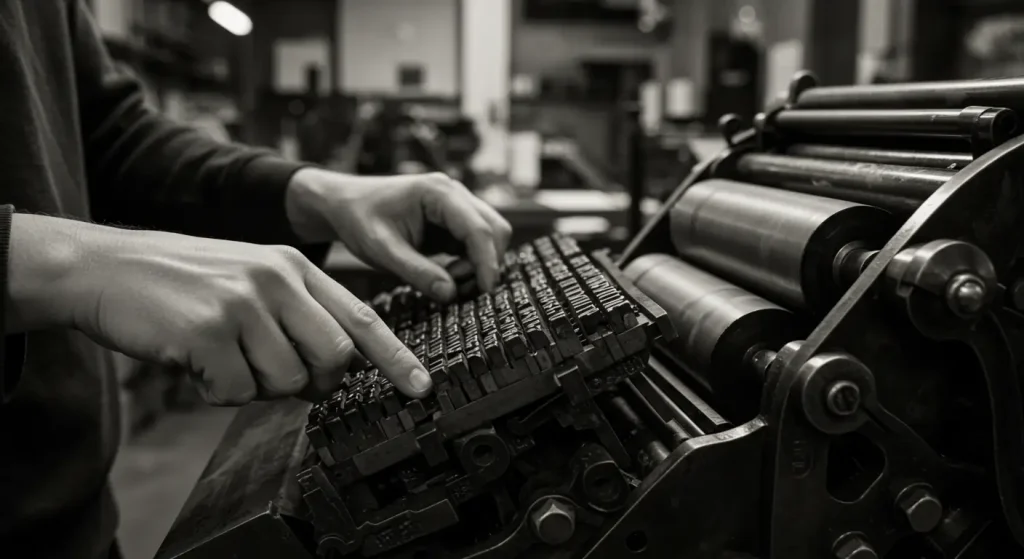Why Print Techniques Still Matter
In a digital-first world, you might think print has faded into the background—but when it comes to quality, craftsmanship, and creative impact, traditional and modern printing methods still lead the way. Whether you’re producing high-end wedding invitations, bespoke business brochures or something as sentimental as school leavers books, the print technique you choose can make a lasting impression. Different printing methods bring out different qualities in a finished product, affecting everything from the feel of the paper to the sharpness of the text.
Understanding the differences between letterpress, litho, and newer digital methods isn’t just for designers and printers. If you’re commissioning a print job for your business, school, or event, knowing what each technique offers helps you get better value and results.
Letterpress: Classic Elegance and Timeless Detail
Letterpress is the oldest traditional form of printing and one that’s made a significant comeback thanks to its tactile, premium look. It works by pressing inked plates onto the surface of the paper, creating a subtle indentation that gives each piece a hand-crafted quality. The result is rich, textured, and often used for occasions where visual impact and elegance are key.
While not suitable for large print runs or jobs that require variable data like names or barcodes, letterpress is a top choice for invitations, certificates, or limited edition school leavers books when a lasting keepsake is the goal. Its appeal lies in its precision and the way it elevates simple designs through depth and texture.
Lithographic Printing: The Workhorse of Quality Bulk Printing
Litho, short for lithographic printing, remains one of the most commonly used techniques for commercial print. It’s perfect for medium to large print runs where consistency and sharp image reproduction are essential. Litho printing uses plates and offset rollers to transfer ink to paper, offering exceptional clarity, colour accuracy, and cost efficiency at scale.
School leavers books printed litho-style often benefit from professional binding, photo-quality printing, and the ability to run several hundred copies without sacrificing quality. If you’re printing catalogues, magazines, brochures or product packaging, litho is often the preferred method because of its reliability and price-performance balance.
Digital Printing: Fast, Flexible, and Cost-Effective
Digital printing is often the go-to method for quick turnaround times or personalised print jobs. It’s a direct-to-paper method, meaning there’s no need for plates or lengthy setup processes. For small runs or one-off items, digital printing makes sense—especially when each copy might need different information, such as individual names, photos, or QR codes.
This flexibility makes digital printing ideal for modern school leavers books where each student might have their own dedicated pages, or for small businesses wanting to trial a limited run of flyers or promotional materials. It’s also useful for on-demand reprints and updates without incurring high set-up costs.
Speciality Print Techniques: When You Want to Go the Extra Mile
Beyond the core processes, there are many other techniques that can enhance the visual appeal and longevity of your printed materials. Foil blocking, embossing, spot UV, and thermography all add unique finishes that can elevate a standard printed item into something much more memorable. These are often used in conjunction with litho or digital processes to give a premium feel, particularly for high-value marketing materials, branded packaging, and keepsakes like school leavers books that deserve to be cherished.
Choosing the right combination of print technique and finish can make a real difference in how your message is received. A tactile surface or metallic highlight can catch attention and communicate quality before a single word is even read.
Matching Technique to Purpose
When deciding how to print your project, the nature of what you’re printing should guide your decision. If you’re creating an elegant run of invitations or celebration certificates, the craftsmanship of letterpress might be well worth the extra cost. For high-volume, image-rich documents such as prospectuses or school yearbooks, litho printing delivers superior quality at scale. If speed, flexibility, or personalisation is a priority, digital printing is often the most practical option.
Print shops will often advise you on what suits your brief best, but understanding these techniques beforehand puts you in a stronger position to ask the right questions and make informed choices.
Print That Connects
In a fast-moving world where digital communication is everywhere, it’s easy to overlook the value of a well-printed piece. But when something is printed beautifully, it stands out. The choice of technique can enhance your message, lend authority to your brand, and turn a simple booklet into a treasured keepsake.
This is especially true with school leavers books. These are more than just photos and names—they’re lasting reminders of friendships, shared memories, and the end of a chapter. Whether digitally printed for speed and flexibility or litho-printed for a crisp, high-quality finish, the right method brings those memories to life in a way digital files never could.
A Final Word on Choosing Wisely
Print isn’t one-size-fits-all. Each method has strengths and ideal uses, and each brings something unique to the table. As print technology continues to evolve, what remains unchanged is the ability of a carefully crafted printed piece to deliver impact, tell a story, and leave a lasting impression.
So whether you’re commissioning a run of business brochures, creating marketing materials, or producing a school leavers book to be opened years from now, don’t underestimate the power of the printing process behind it.
